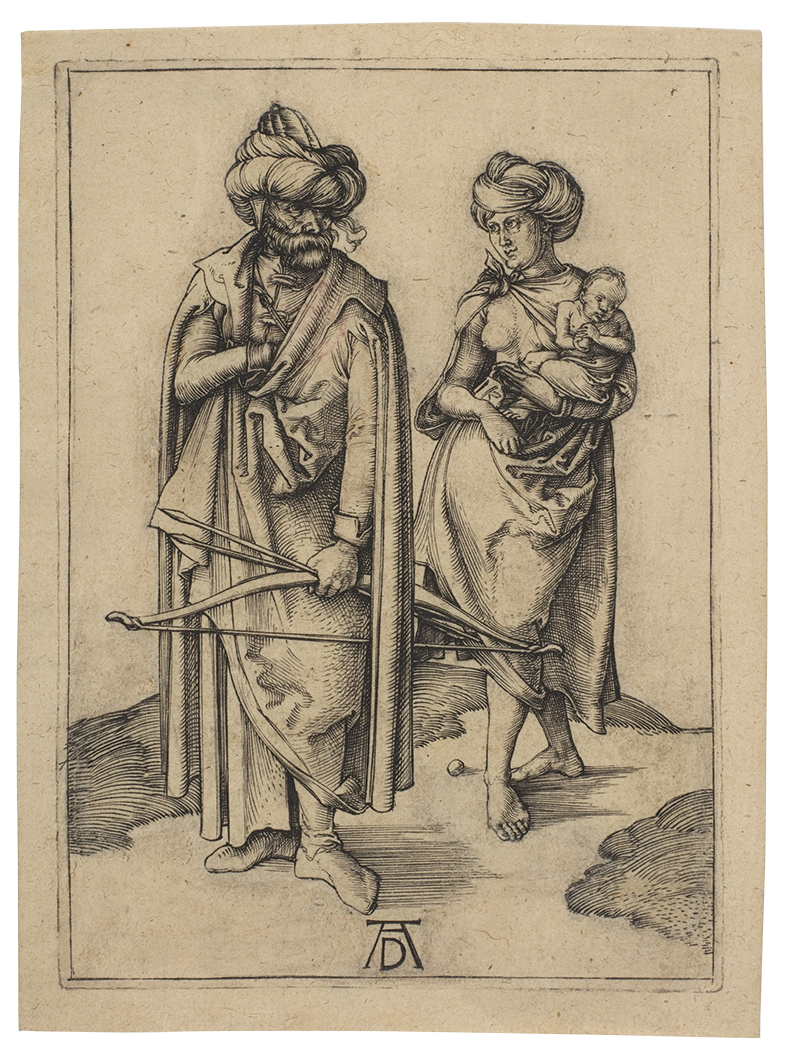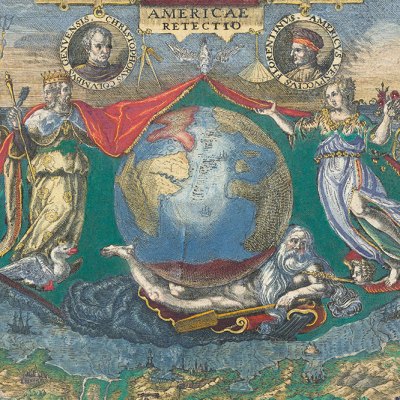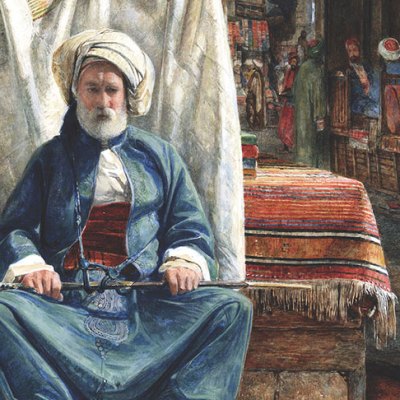From the June 2023 issue of Apollo. Preview and subscribe here.
A book titled Europe Views the World is inevitably going to inspire debates on decolonising art history, and so it should. Larry Silver’s book is a bold attempt to provide what he begins by labelling a ‘Preface to an early modern global art history’: the book offers an overview of visual – mainly painted and printed – artworks, or ‘views’, by predominantly northern European artists, from c. 1500 to 1700.
 It is composed of chapters on representations of, primarily, geographical regions – the Americas, Africa, Asia, India and East Asia – plus separate accounts of monsters in the medieval imagination, depictions of Muslims and concluding reflections on what Silver calls the ‘New 18th Century’. Much of what is here will be familiar to many: Dürer’s depiction of Turks, indigenous Americans engraved by Theodor de Bry, and orientalist paintings and drawings by Rubens and Rembrandt. One of the more interesting aspects of the book is the inclusion of a final ‘In Response’ section at the end of each chapter, detailing how the various regions responded to European art.
It is composed of chapters on representations of, primarily, geographical regions – the Americas, Africa, Asia, India and East Asia – plus separate accounts of monsters in the medieval imagination, depictions of Muslims and concluding reflections on what Silver calls the ‘New 18th Century’. Much of what is here will be familiar to many: Dürer’s depiction of Turks, indigenous Americans engraved by Theodor de Bry, and orientalist paintings and drawings by Rubens and Rembrandt. One of the more interesting aspects of the book is the inclusion of a final ‘In Response’ section at the end of each chapter, detailing how the various regions responded to European art.
Silver begins by outlining the visualisation of myths of monsters and aliens in the medieval European imagination, focusing on the ‘wild man’ trope and concluding with stereotypical portrayals of Jews in devotional images such as The Fountain of Grace (c. 1440–50), attributed to the studio of Jan van Eyck. He then moves to consider how the representation of Muslims shifts from the figure of the Saracen to the Turk, and in particular Dürer’s responses, mixing ‘fear and loathing towards a formidable enemy’ – the rise of Islam and Ottoman imperialism – together with ‘a fascinated, careful observation of those same exotic neighbours’. The chapter on the Americas is disappointingly limited, with much on cannibalism, but surprising in its omissions: although the Elizabethan artist and colonial governor John White is mentioned, his extensive drawings of Algonquin life and customs during the failed settlement at Roanoke in the 1580s are neither discussed nor reproduced.
The African chapter is particularly sparse, jumping from Bosch’s Adoration of the Magi (1494) to Dürer’s drawing of an African maid (1521), probably a slave, to Rembrandt’s sketch Head of a Black Woman (c. 1630) and Dirk Valkenburg’s deeply troubling, semi-pornographic painting of the life of enslaved Africans in the Dutch colony of Suriname, Slave Dance (1707).
The Turkish Family (c. 1496) Albrecht Dürer. Metropolitan Museum of Art, New York

The chapter on India acknowledges a much longer history of Western engagement, percolated through Hellenic culture. It is arguably the most interesting section of the book, trying to understand European visual responses to Hinduism, and reproducing some intriguing early German woodcuts by Jörg Breu, Hans Burgkmair and, almost inevitably, Dürer’s Rhinoceros (1515). It ends with Joan Blaeu’s map of Asia (1667), depicting Asian inhabitants in the page margins, to make the point that in just 170 years European views of Asia had gone from the monstrous races shown in the Nuremberg Chronicle (1493) to the commercial opportunities represented by the people and cities on Blaeu’s map. The final geographical chapter, titled ‘East Asia’, is far less successful, as it only really describes European views of China and Japan, with no mention of the rich variety of visual material on the Indian and Pacific oceans, nor the representation of the European imperial competition for the spice-producing islands of the Moluccas; it is remarkable that Magellan’s first circumnavigation of the globe (1519–22) is mentioned only once, in passing, and Antonio Pigafetta’s drawings not at all (throughout the book there is a fixation on printed material at the expense of rich and varied manuscript materials).
The concluding chapter seems to promise a new reading of 18th-century views of the world. Instead it is primarily an interpretation of Jean Frederic Bernard’s Religious Ceremonies and Customs of all the Peoples of the World (1723–43), illustrated by Bernard Picart. Silver says the book offered ‘a new comparative, relativist framework […] denying the superiority of any single religion’, but yet a paragraph later describes it as having ‘an anti-Catholic slant’. The rest of the chapter briefly surveys the European adoption of Chinese ornamentation, or chinoiserie, and the similar use of Turkish Ottoman styles, or turquerie, with little sense of the cultural politics of orientalism. He concludes by looking at Australia, though here as elsewhere images are referred to, but frustratingly not reproduced. Finally, there are reflections on the change in cartographic representations to the ‘four continents’ of Europe, Asia, Africa, and now the Americas, and Europe’s growing confidence and global self-assertion.
In a book on visual self-assertiveness, Silver’s lacks a sense of what it wants to be. Without a sustained methodological argument from the outset about cross-cultural encounter, Europe Views the World often reads more like an old-fashioned iconographic survey than a contribution to the move to decolonise early modern art history. The sections on non-European visual responses are extremely uneven and poorly thought through: many simply acknowledge a paucity of materials, as in the case of the Americas. This problem is exacerbated by the very limited range of media Silver covers: painting, prints and drawing predominate to the exclusion of other forms – the Benin bronzes are mentioned briefly in the African chapter, but little else – whereas work on other decorative arts and crafts using materials like textiles and stone, or texts such as costume books, could have broadened the understanding of artistic exchange and appropriation. While Silver argues the case for a focus on northern European material, that is not the book’s title, and the lack of anything more than a cursory nod to Italian, Spanish and Portuguese art in this period is astonishing: it is difficult to comprehend European views of the Islamic world without exploring the conflicted responses of Italian Renaissance courts, or even Elizabethan alliances with the Ottomans. Finally the book contains several typos and grammatical mistakes (Japheth is misspelled), and missing definite articles (‘the Dutch also got deeply involved in African slave trade’) are particularly unfortunate. Europe Views the World is a missed opportunity to write a significant book on an important topic.
Europe Views the World, 1500–1700 by Larry Silver is published by Lund Humphries.
From the June 2023 issue of Apollo. Preview and subscribe here.



